Report on Becoming a Professional and Reflective Practitioner
VerifiedAdded on 2023/06/18
|13
|1108
|311
Report
AI Summary
This report provides a detailed examination of reflective practice within the health and social care sector, emphasizing its importance in professional development and improved patient care. It explores the purpose of reflection, the tools used for reflection such as observation and team meetings, and various reflective models including Kolb's reflective cycle and Driscoll's model. The report also discusses the application of reflective practices in areas like mentoring and research, evaluates the impact of reflection on personal and professional growth, and presents the six theme framework (description, feelings, evaluation, analysis, conclusion, and action plan). Ultimately, the report concludes that reflection is crucial for identifying mistakes, improving performance, and delivering better services to patients, supported by continuous evaluation and feedback mechanisms.
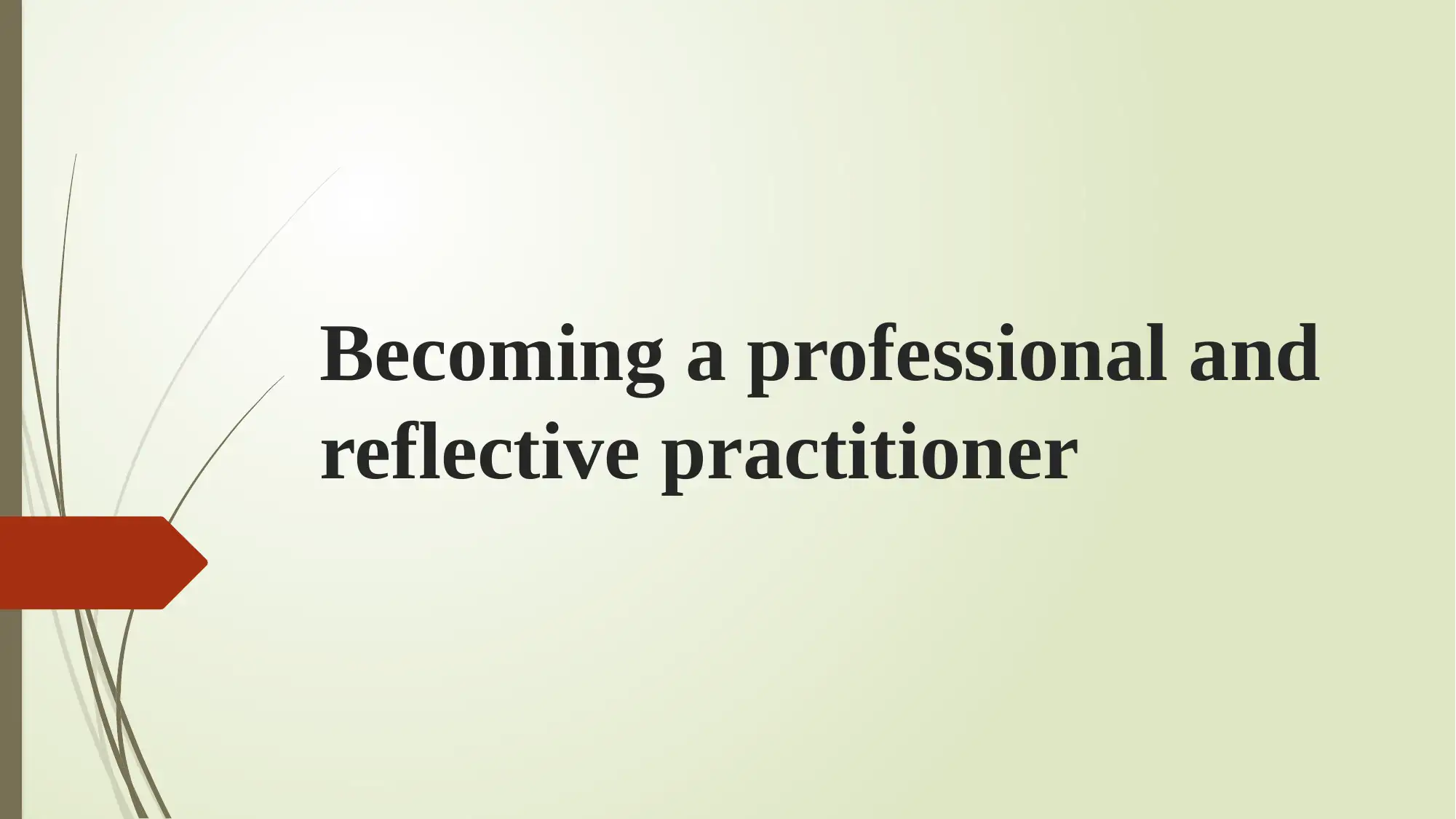
Becoming a professional and
reflective practitioner
reflective practitioner
Paraphrase This Document
Need a fresh take? Get an instant paraphrase of this document with our AI Paraphraser
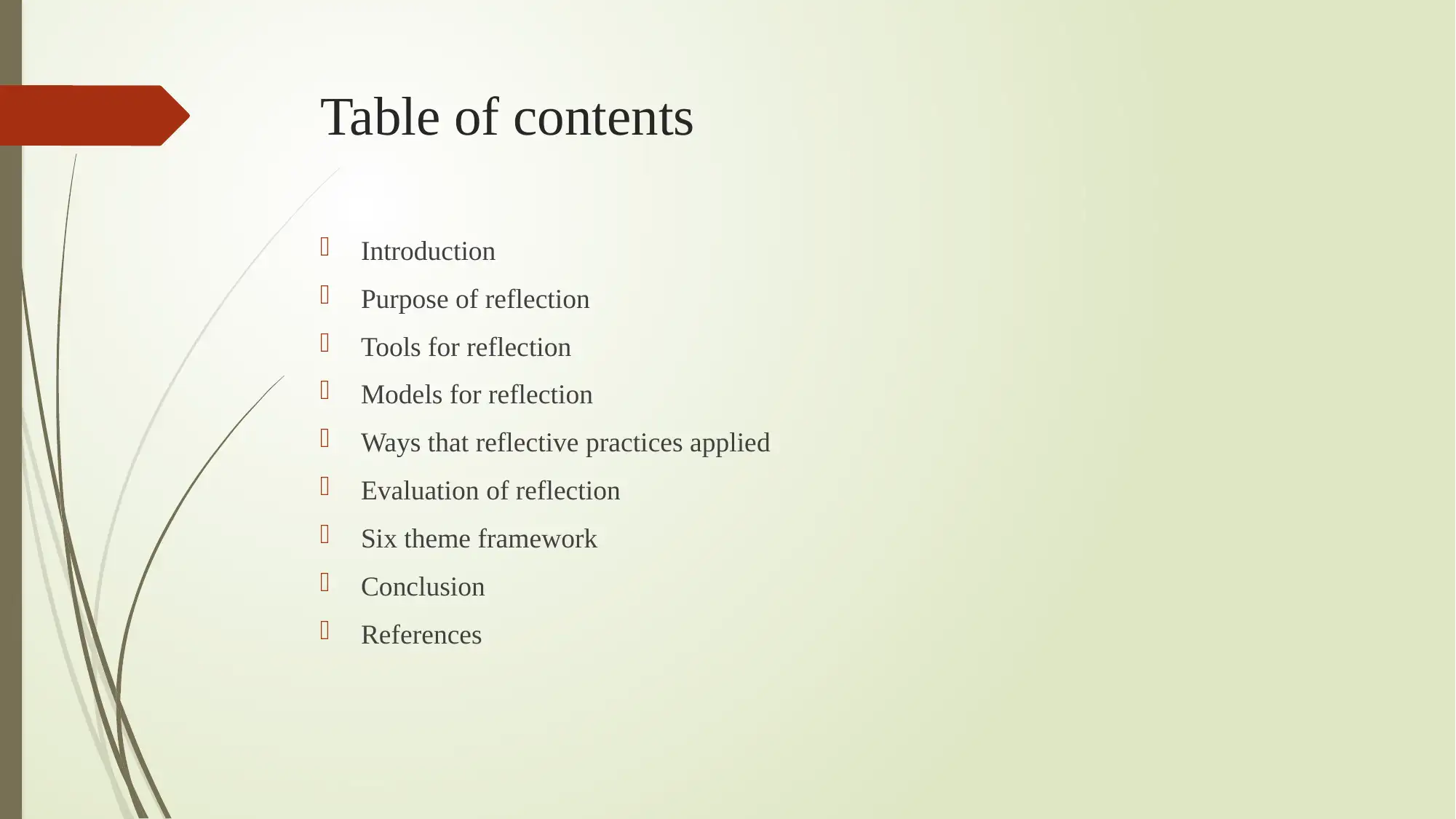
Table of contents
Introduction
Purpose of reflection
Tools for reflection
Models for reflection
Ways that reflective practices applied
Evaluation of reflection
Six theme framework
Conclusion
References
Introduction
Purpose of reflection
Tools for reflection
Models for reflection
Ways that reflective practices applied
Evaluation of reflection
Six theme framework
Conclusion
References
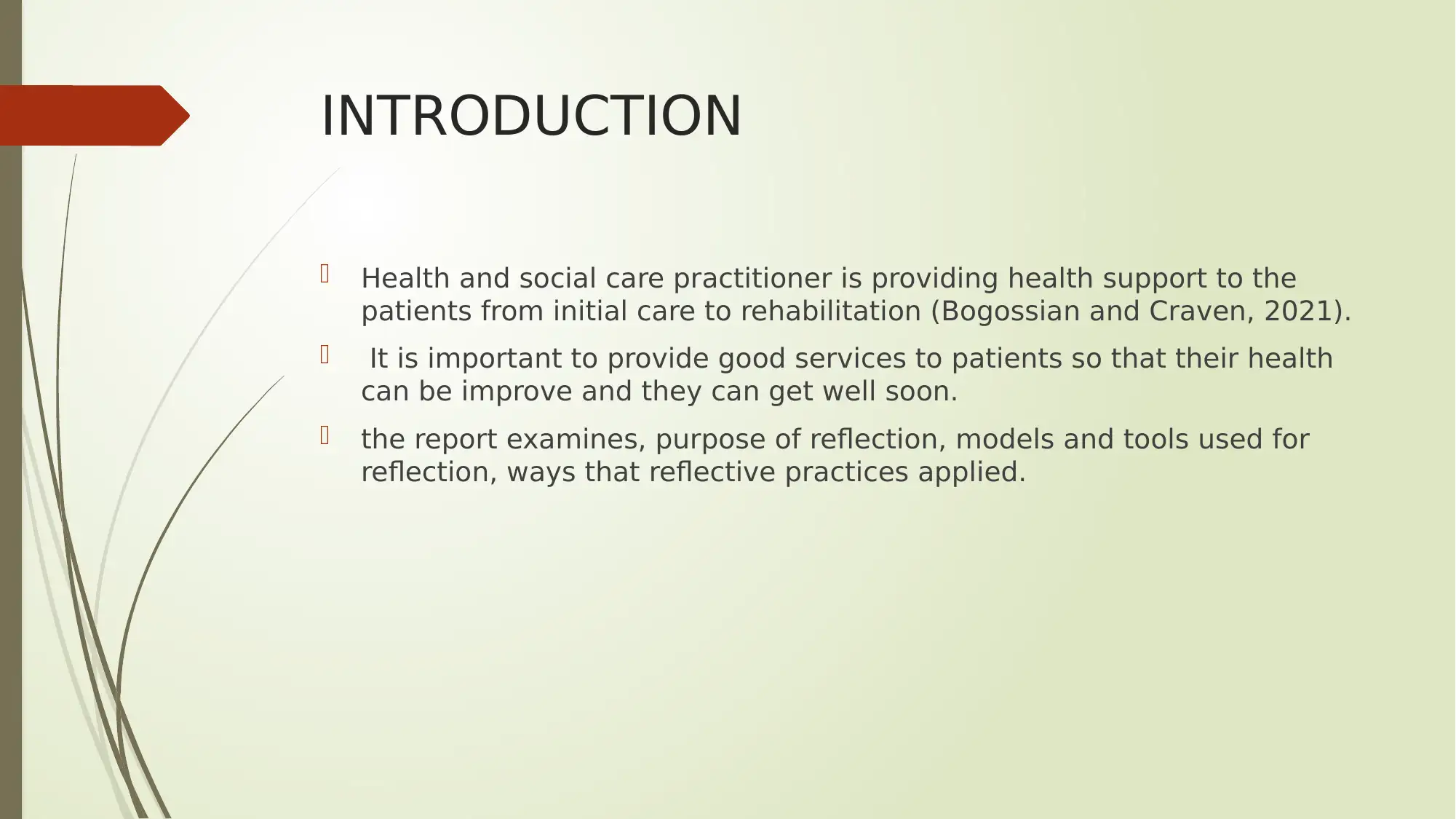
INTRODUCTION
Health and social care practitioner is providing health support to the
patients from initial care to rehabilitation (Bogossian and Craven, 2021).
It is important to provide good services to patients so that their health
can be improve and they can get well soon.
the report examines, purpose of reflection, models and tools used for
reflection, ways that reflective practices applied.
Health and social care practitioner is providing health support to the
patients from initial care to rehabilitation (Bogossian and Craven, 2021).
It is important to provide good services to patients so that their health
can be improve and they can get well soon.
the report examines, purpose of reflection, models and tools used for
reflection, ways that reflective practices applied.
⊘ This is a preview!⊘
Do you want full access?
Subscribe today to unlock all pages.

Trusted by 1+ million students worldwide
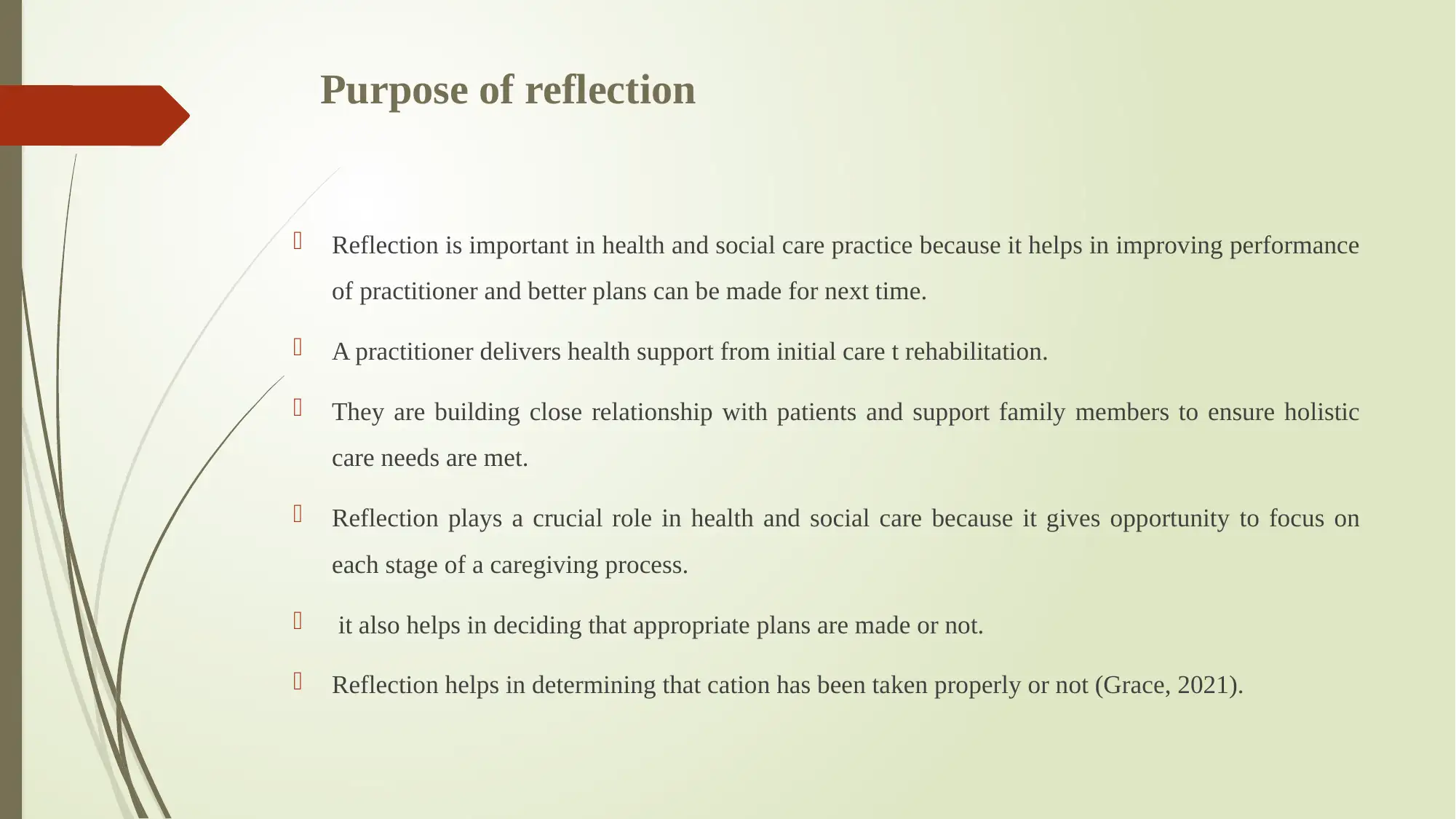
Purpose of reflection
Reflection is important in health and social care practice because it helps in improving performance
of practitioner and better plans can be made for next time.
A practitioner delivers health support from initial care t rehabilitation.
They are building close relationship with patients and support family members to ensure holistic
care needs are met.
Reflection plays a crucial role in health and social care because it gives opportunity to focus on
each stage of a caregiving process.
it also helps in deciding that appropriate plans are made or not.
Reflection helps in determining that cation has been taken properly or not (Grace, 2021).
Reflection is important in health and social care practice because it helps in improving performance
of practitioner and better plans can be made for next time.
A practitioner delivers health support from initial care t rehabilitation.
They are building close relationship with patients and support family members to ensure holistic
care needs are met.
Reflection plays a crucial role in health and social care because it gives opportunity to focus on
each stage of a caregiving process.
it also helps in deciding that appropriate plans are made or not.
Reflection helps in determining that cation has been taken properly or not (Grace, 2021).
Paraphrase This Document
Need a fresh take? Get an instant paraphrase of this document with our AI Paraphraser

Tools used for reflection
Observation- this is a tool which is used for
reflection in health and social care. Observation
helps in identifying mistakes and improvement can
be done to provide good service to patient. This is
used as performance is observed and better plans
are made to satisfy need of patient. I was
observing work done by my senior members and
try to make changes in my performance so that I
can provide good services to patients (Schön,
2017).
Team meeting – this tool is used in health and
social care. Team d meeting is conducted and all
members are discussing issues faced by
practitioners and find solutions. When meeting is
organised then better plans can be made and weak
points of employees are discussed. Improvements
are made in performance of employees so that
good services can be provided to patients.
Observation- this is a tool which is used for
reflection in health and social care. Observation
helps in identifying mistakes and improvement can
be done to provide good service to patient. This is
used as performance is observed and better plans
are made to satisfy need of patient. I was
observing work done by my senior members and
try to make changes in my performance so that I
can provide good services to patients (Schön,
2017).
Team meeting – this tool is used in health and
social care. Team d meeting is conducted and all
members are discussing issues faced by
practitioners and find solutions. When meeting is
organised then better plans can be made and weak
points of employees are discussed. Improvements
are made in performance of employees so that
good services can be provided to patients.
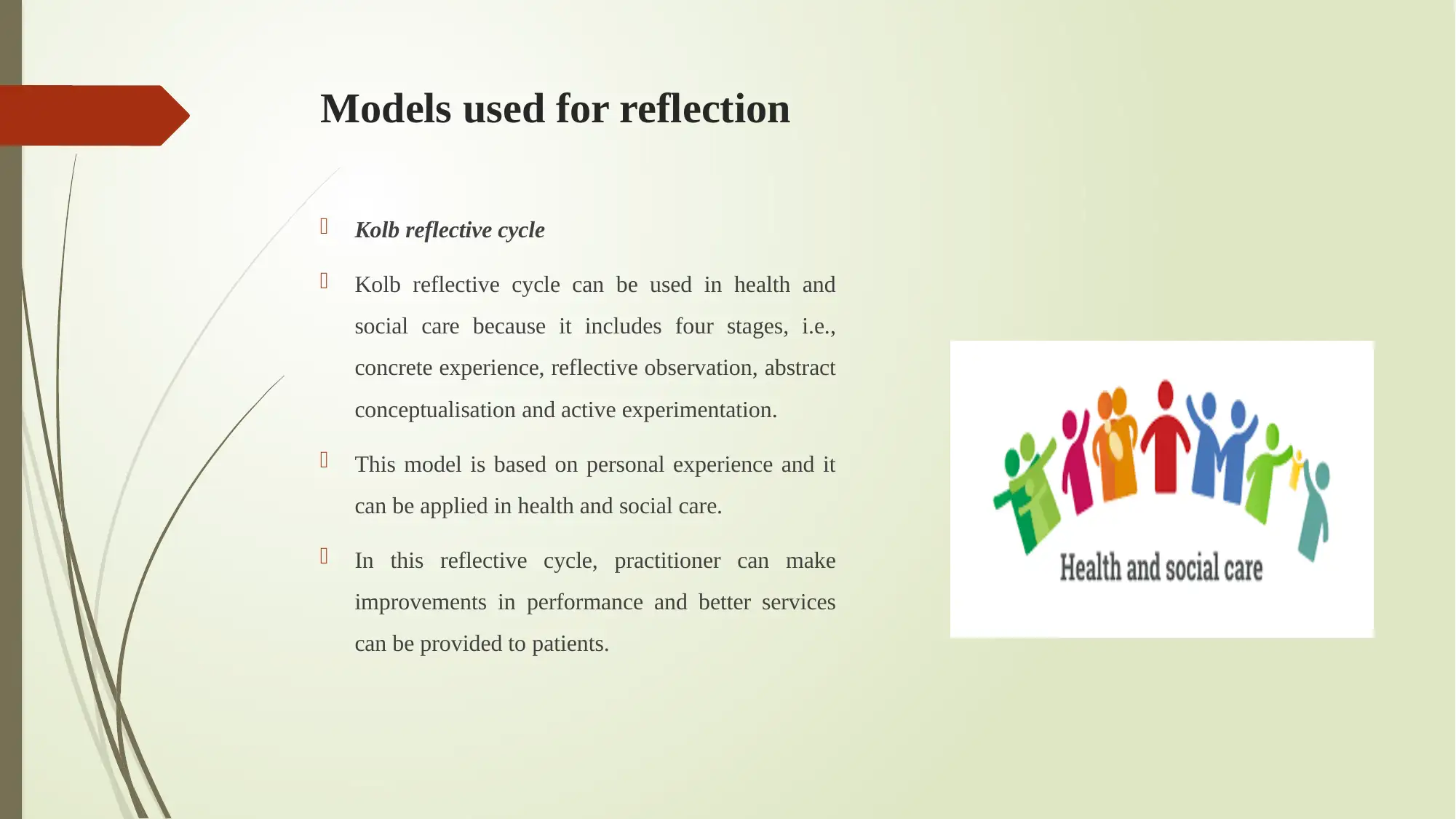
Models used for reflection
Kolb reflective cycle
Kolb reflective cycle can be used in health and
social care because it includes four stages, i.e.,
concrete experience, reflective observation, abstract
conceptualisation and active experimentation.
This model is based on personal experience and it
can be applied in health and social care.
In this reflective cycle, practitioner can make
improvements in performance and better services
can be provided to patients.
Kolb reflective cycle
Kolb reflective cycle can be used in health and
social care because it includes four stages, i.e.,
concrete experience, reflective observation, abstract
conceptualisation and active experimentation.
This model is based on personal experience and it
can be applied in health and social care.
In this reflective cycle, practitioner can make
improvements in performance and better services
can be provided to patients.
⊘ This is a preview!⊘
Do you want full access?
Subscribe today to unlock all pages.

Trusted by 1+ million students worldwide

Driscoll model
Driscoll model is used for reflection in health
and social service as it includes, three steps
such as, what, so what and now what.
These are three questions which is involved in
this process and practitioner can improve
performance (Walsh and et.al., 2020).
Next step explains why that action or event was
significant and last step includes now what
which means how the information is used by
practitioner which is collected.
Driscoll model is used for reflection in health
and social service as it includes, three steps
such as, what, so what and now what.
These are three questions which is involved in
this process and practitioner can improve
performance (Walsh and et.al., 2020).
Next step explains why that action or event was
significant and last step includes now what
which means how the information is used by
practitioner which is collected.
Paraphrase This Document
Need a fresh take? Get an instant paraphrase of this document with our AI Paraphraser
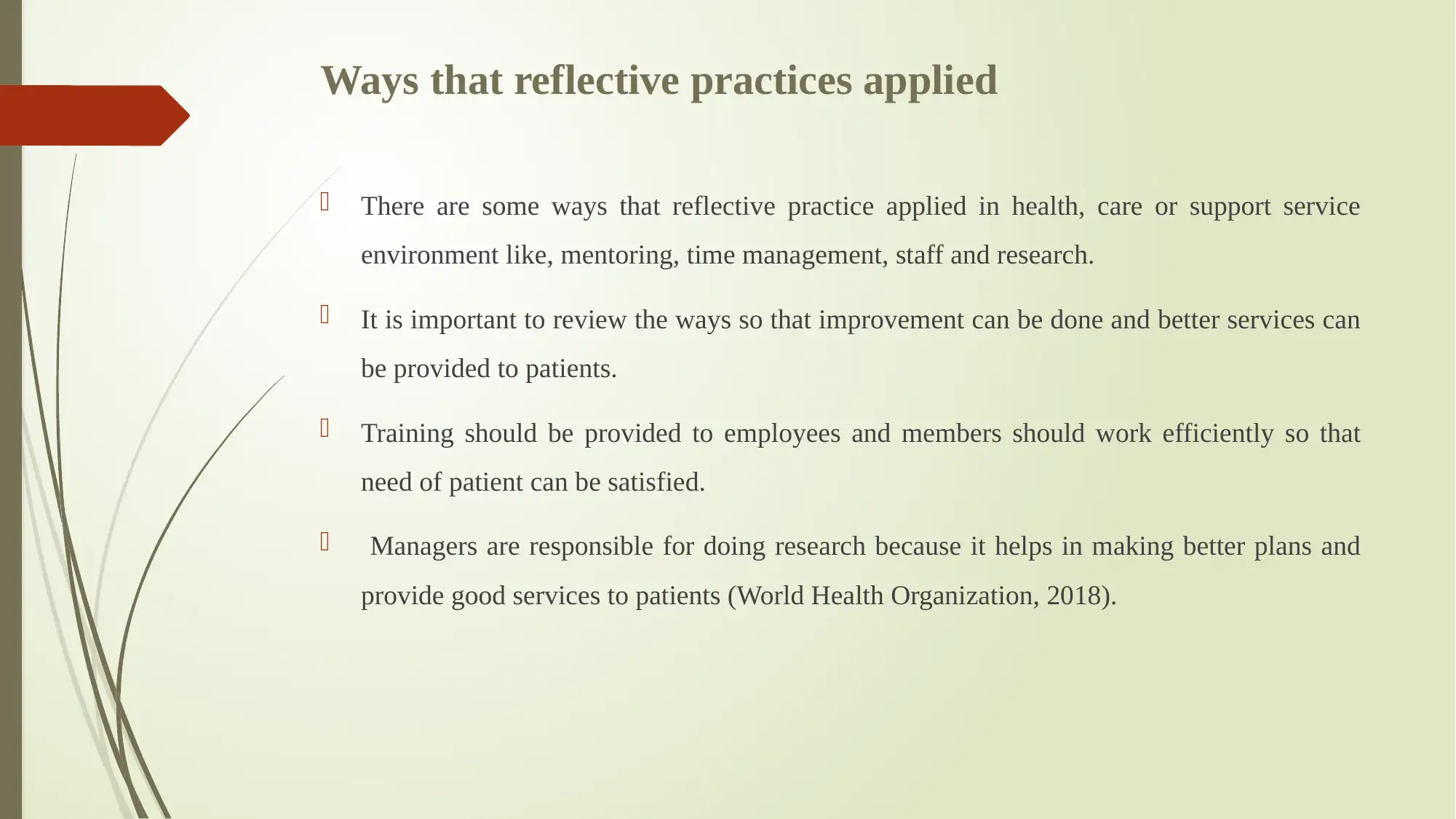
Ways that reflective practices applied
There are some ways that reflective practice applied in health, care or support service
environment like, mentoring, time management, staff and research.
It is important to review the ways so that improvement can be done and better services can
be provided to patients.
Training should be provided to employees and members should work efficiently so that
need of patient can be satisfied.
Managers are responsible for doing research because it helps in making better plans and
provide good services to patients (World Health Organization, 2018).
There are some ways that reflective practice applied in health, care or support service
environment like, mentoring, time management, staff and research.
It is important to review the ways so that improvement can be done and better services can
be provided to patients.
Training should be provided to employees and members should work efficiently so that
need of patient can be satisfied.
Managers are responsible for doing research because it helps in making better plans and
provide good services to patients (World Health Organization, 2018).

Evaluation of reflection
Evaluation of how reflection impact on personal and professional development and that of
individuals using health, care or support services.
Reflection helps in building positive relationship with colleagues.
Reflection helps in identifying mistakes and better plans can be made for improvement.
In determining performance help can be taken from colleagues because they are knowing
our strengths and weakness.
For evaluation, feedback can be taken from different people as all the people are having
different thoughts and opinions.
Evaluation of how reflection impact on personal and professional development and that of
individuals using health, care or support services.
Reflection helps in building positive relationship with colleagues.
Reflection helps in identifying mistakes and better plans can be made for improvement.
In determining performance help can be taken from colleagues because they are knowing
our strengths and weakness.
For evaluation, feedback can be taken from different people as all the people are having
different thoughts and opinions.
⊘ This is a preview!⊘
Do you want full access?
Subscribe today to unlock all pages.

Trusted by 1+ million students worldwide
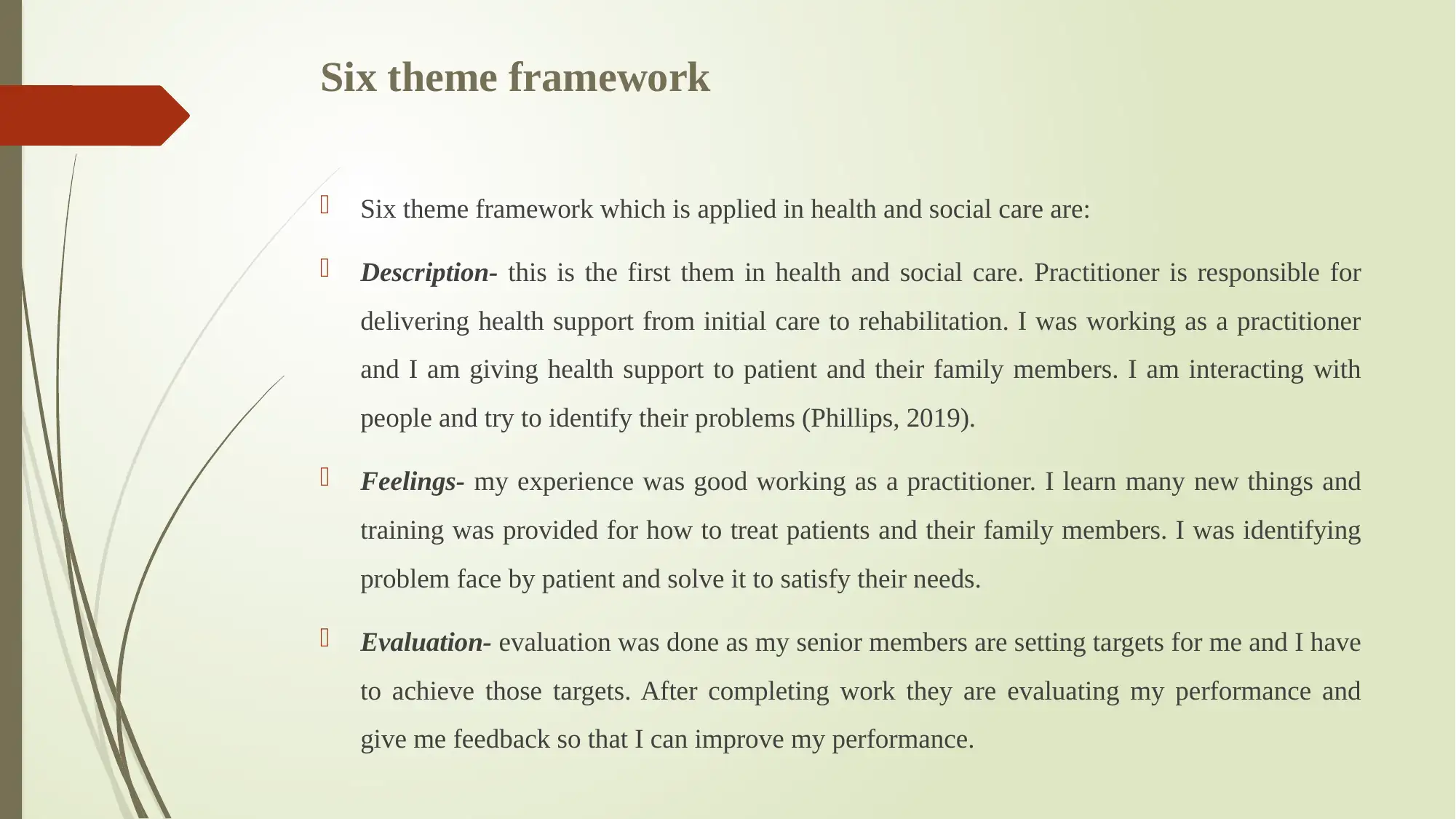
Six theme framework
Six theme framework which is applied in health and social care are:
Description- this is the first them in health and social care. Practitioner is responsible for
delivering health support from initial care to rehabilitation. I was working as a practitioner
and I am giving health support to patient and their family members. I am interacting with
people and try to identify their problems (Phillips, 2019).
Feelings- my experience was good working as a practitioner. I learn many new things and
training was provided for how to treat patients and their family members. I was identifying
problem face by patient and solve it to satisfy their needs.
Evaluation- evaluation was done as my senior members are setting targets for me and I have
to achieve those targets. After completing work they are evaluating my performance and
give me feedback so that I can improve my performance.
Six theme framework which is applied in health and social care are:
Description- this is the first them in health and social care. Practitioner is responsible for
delivering health support from initial care to rehabilitation. I was working as a practitioner
and I am giving health support to patient and their family members. I am interacting with
people and try to identify their problems (Phillips, 2019).
Feelings- my experience was good working as a practitioner. I learn many new things and
training was provided for how to treat patients and their family members. I was identifying
problem face by patient and solve it to satisfy their needs.
Evaluation- evaluation was done as my senior members are setting targets for me and I have
to achieve those targets. After completing work they are evaluating my performance and
give me feedback so that I can improve my performance.
Paraphrase This Document
Need a fresh take? Get an instant paraphrase of this document with our AI Paraphraser
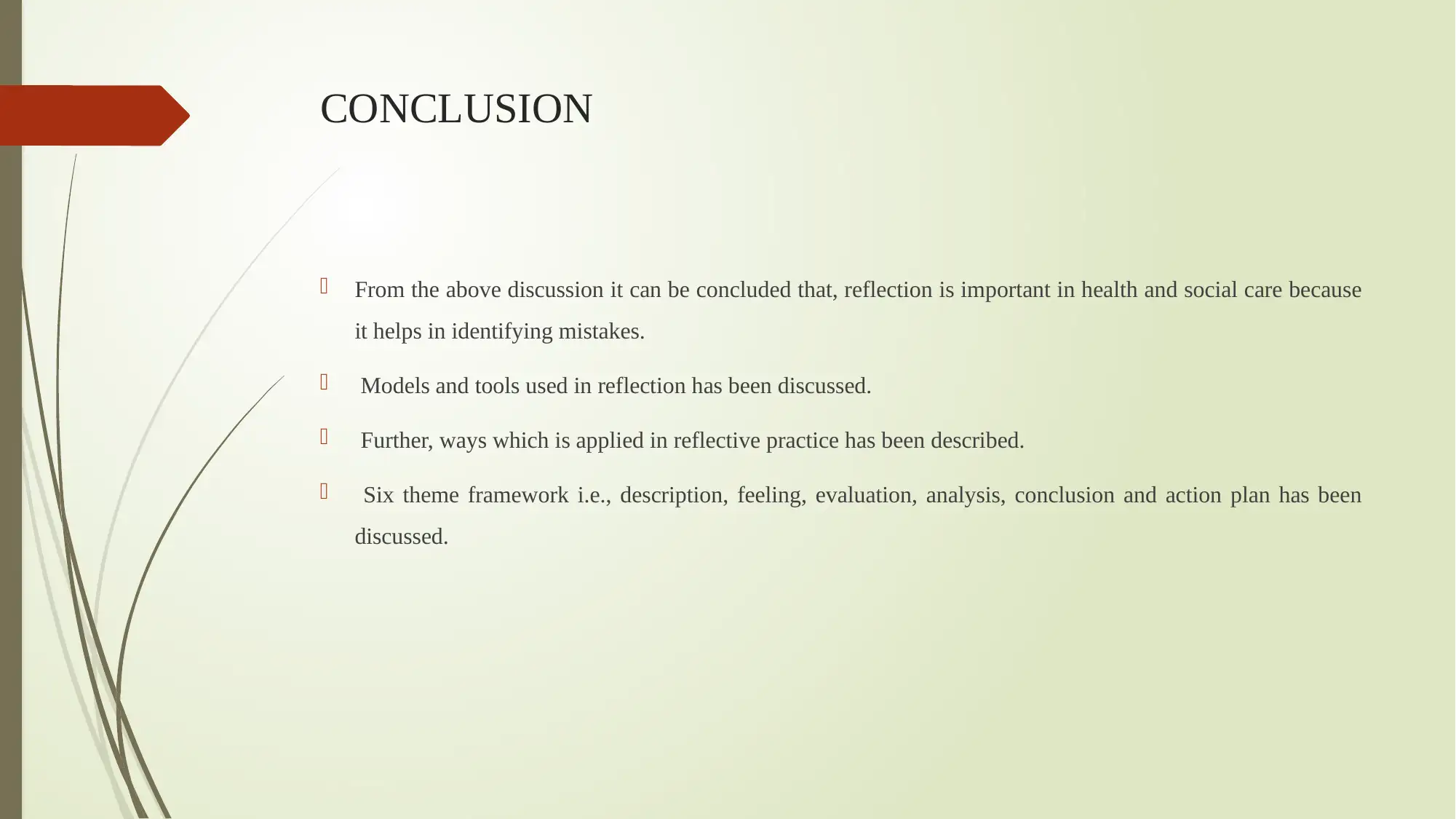
CONCLUSION
From the above discussion it can be concluded that, reflection is important in health and social care because
it helps in identifying mistakes.
Models and tools used in reflection has been discussed.
Further, ways which is applied in reflective practice has been described.
Six theme framework i.e., description, feeling, evaluation, analysis, conclusion and action plan has been
discussed.
From the above discussion it can be concluded that, reflection is important in health and social care because
it helps in identifying mistakes.
Models and tools used in reflection has been discussed.
Further, ways which is applied in reflective practice has been described.
Six theme framework i.e., description, feeling, evaluation, analysis, conclusion and action plan has been
discussed.
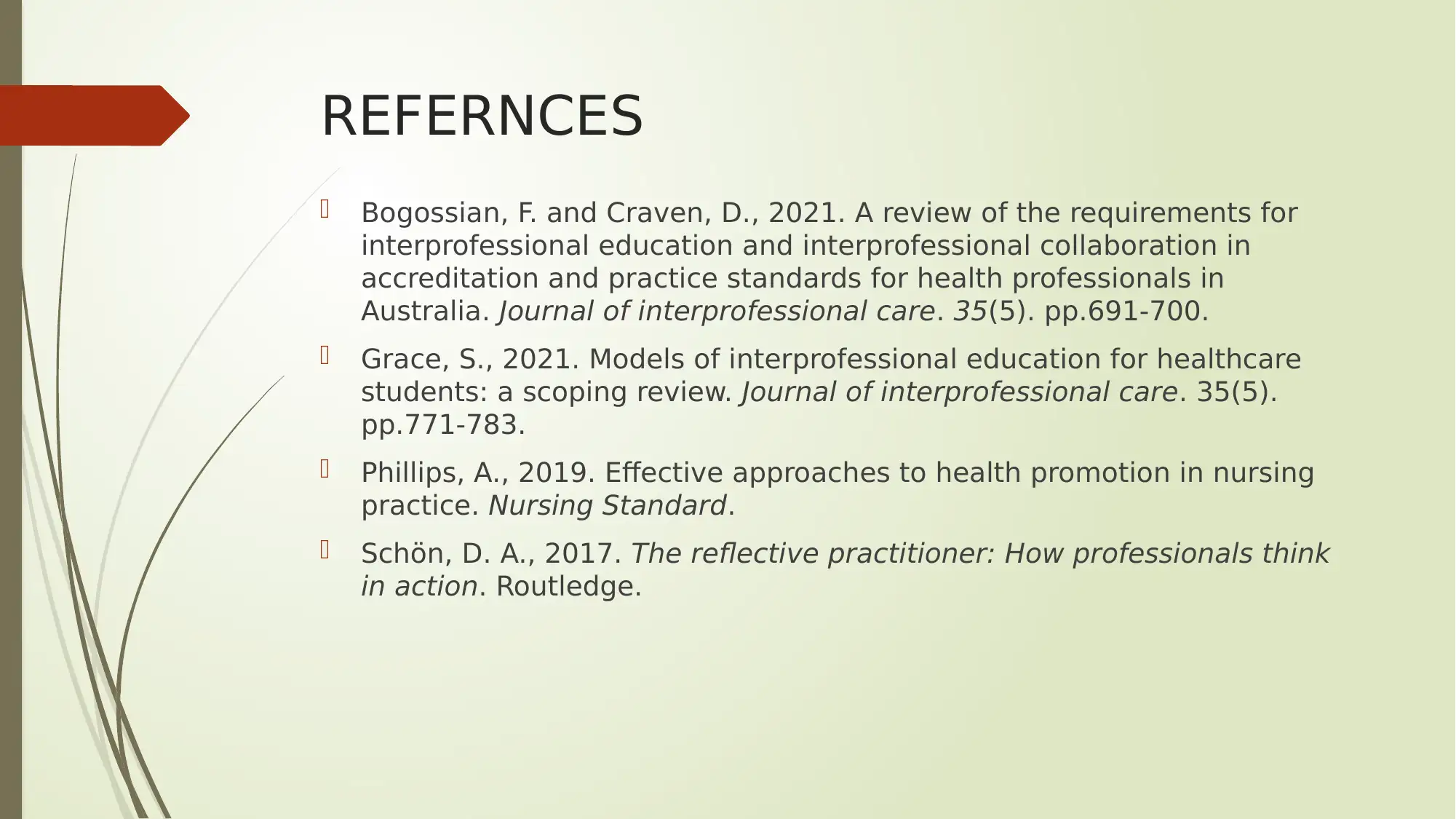
REFERNCES
Bogossian, F. and Craven, D., 2021. A review of the requirements for
interprofessional education and interprofessional collaboration in
accreditation and practice standards for health professionals in
Australia. Journal of interprofessional care. 35(5). pp.691-700.
Grace, S., 2021. Models of interprofessional education for healthcare
students: a scoping review. Journal of interprofessional care. 35(5).
pp.771-783.
Phillips, A., 2019. Effective approaches to health promotion in nursing
practice. Nursing Standard.
Schön, D. A., 2017. The reflective practitioner: How professionals think
in action. Routledge.
Bogossian, F. and Craven, D., 2021. A review of the requirements for
interprofessional education and interprofessional collaboration in
accreditation and practice standards for health professionals in
Australia. Journal of interprofessional care. 35(5). pp.691-700.
Grace, S., 2021. Models of interprofessional education for healthcare
students: a scoping review. Journal of interprofessional care. 35(5).
pp.771-783.
Phillips, A., 2019. Effective approaches to health promotion in nursing
practice. Nursing Standard.
Schön, D. A., 2017. The reflective practitioner: How professionals think
in action. Routledge.
⊘ This is a preview!⊘
Do you want full access?
Subscribe today to unlock all pages.

Trusted by 1+ million students worldwide
1 out of 13
Related Documents
Your All-in-One AI-Powered Toolkit for Academic Success.
+13062052269
info@desklib.com
Available 24*7 on WhatsApp / Email
![[object Object]](/_next/static/media/star-bottom.7253800d.svg)
Unlock your academic potential
Copyright © 2020–2025 A2Z Services. All Rights Reserved. Developed and managed by ZUCOL.




